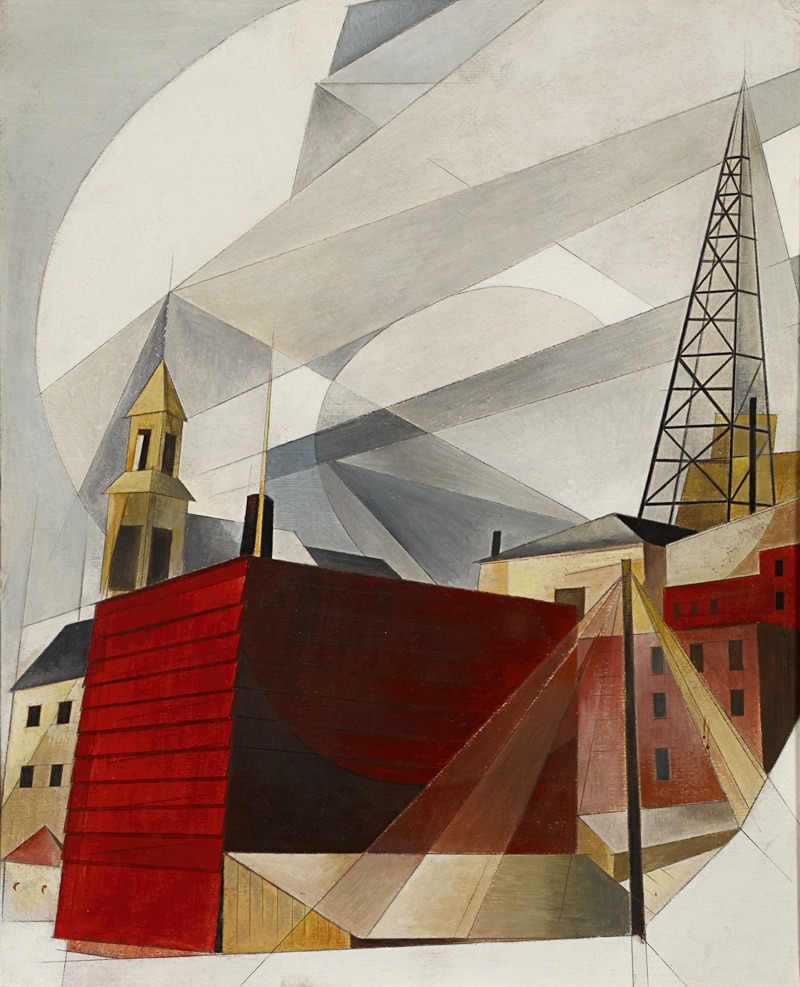
Lancaster
A hand-painted replica of Charles Demuth’s masterpiece Lancaster, meticulously crafted by professional artists to capture the true essence of the original. Each piece is created with museum-quality canvas and rare mineral pigments, carefully painted by experienced artists with delicate brushstrokes and rich, layered colors to perfectly recreate the texture of the original artwork. Unlike machine-printed reproductions, this hand-painted version brings the painting to life, infused with the artist’s emotions and skill in every stroke. Whether for personal collection or home decoration, it instantly elevates the artistic atmosphere of any space.
Charles Demuth was an American painter known for his contributions to the Precisionist movement, which emerged in the early 20th century. While Demuth is perhaps best known for his painting "I Saw the Figure 5 in Gold," he created a number of works that reflect his interest in modernity, architecture, and industrial landscapes. However, there is no widely recognized painting titled "Lancaster" by Charles Demuth. It is possible that the reference might be to a lesser-known work or a misinterpretation of another title.
Demuth was born in Lancaster, Pennsylvania, in 1883, and the city played a significant role in his life and art. Many of his works were inspired by the local environment, and he often depicted scenes from Lancaster, capturing its architecture and the essence of early 20th-century American life. His connection to Lancaster is evident in several of his paintings, where he explored themes of industrialization and urban landscapes.
Demuth's style is characterized by a combination of realism and abstraction, often employing sharp lines and geometric forms to depict his subjects. This approach is typical of the Precisionist movement, which sought to capture the essence of modern American life through a focus on clarity, precision, and the depiction of industrial and architectural subjects.
Throughout his career, Demuth created a series of "poster portraits," which were abstract representations of his friends and contemporaries. These works often incorporated symbolic elements and text, reflecting the personalities and achievements of the subjects. While these are not directly related to Lancaster, they demonstrate Demuth's innovative approach to portraiture and his ability to blend abstraction with representation.
Demuth's health was a significant factor in his life and work. He suffered from diabetes, which eventually led to his death in 1935. Despite his health challenges, Demuth remained a prolific artist, producing a substantial body of work that continues to be celebrated for its contribution to American modernism.
His works are held in major collections, including the Metropolitan Museum of Art, the Whitney Museum of American Art, and the Philadelphia Museum of Art. These institutions recognize Demuth's impact on American art and his role in shaping the Precisionist movement.
In summary, while there is no specific painting titled "Lancaster" by Charles Demuth that is widely recognized, his connection to Lancaster, Pennsylvania, is evident in his body of work. His paintings often reflect the industrial and architectural elements of the city, contributing to his reputation as a key figure in American modernism and the Precisionist movement.


















